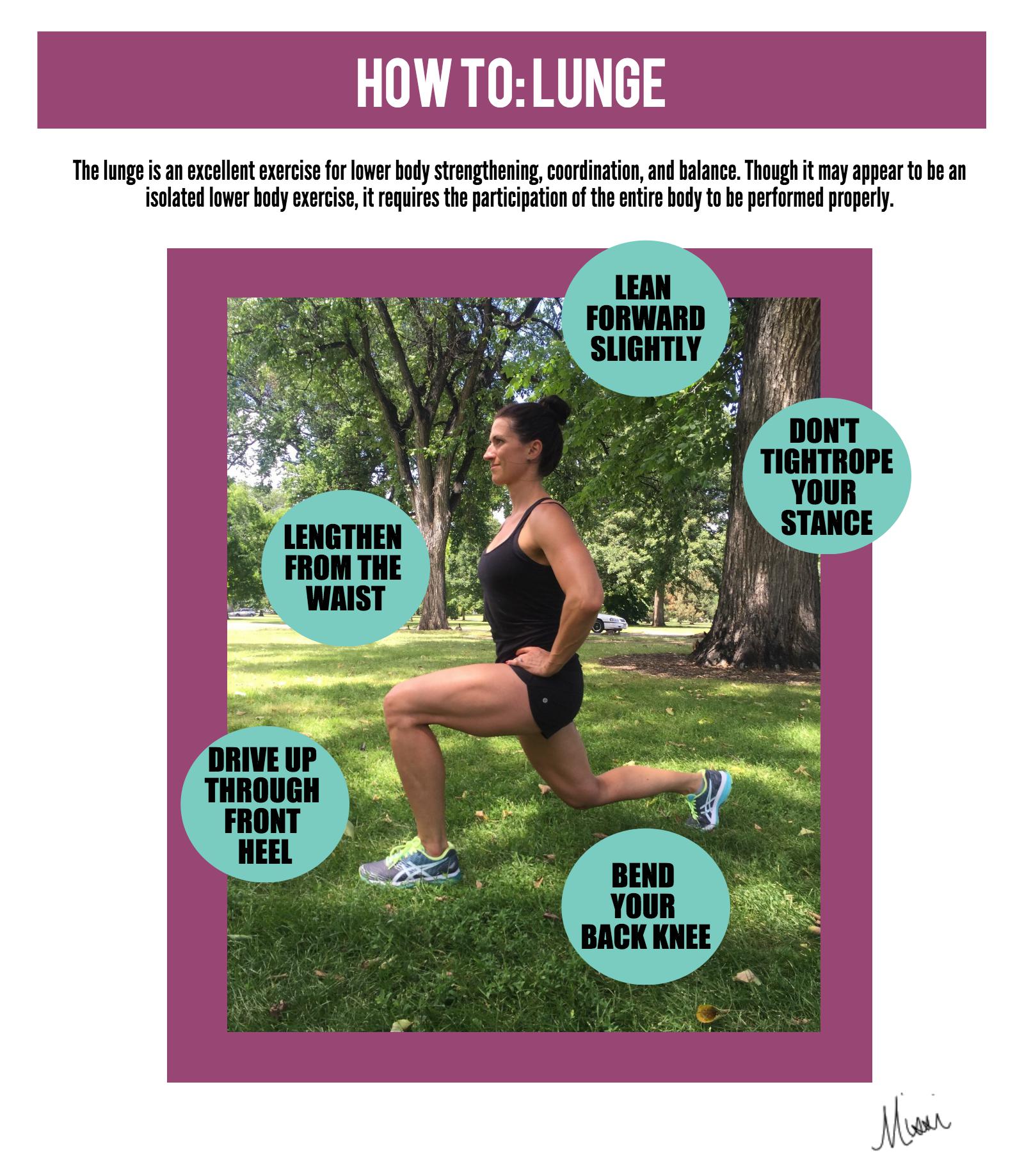Misunderstood Exercise: Breakdown of the Proper Lunge
The lunge is an excellent exercise for lower body strengthening, coordination, and balance. Though it may appear to be an isolated lower body exercise, it requires the participation of the entire body to be performed properly.
Foot placement and directional movement patterns vary to target different muscles and fine-tune athletic skills, making the lunge super versatile. In a standard Reverse Lunge you will begin in an athletic stance* with feet hip-width apart and weight rooted in the heels.
The weight will remain on the front or, posted leg, with the knee set over the ankle and aligned with the middle toes. The non-posted leg steps back onto the ball of the foot. Here are my 5 Expert Tips to help you master your perfect lunge:

- Bend Your Back Knee – once the back foot makes contact with the floor, soften the back knee and drop it down toward the floor. This facilitates the desired depth of the lunge and can be moderated to meet your level of strength and balance.
- Lean Forward Slightly – keeping most of the weight shifted onto the front leg will prevent pain in the back knee. A slight forward lean coupled with the hips pressing back (like a squat) creates the alignment to access hamstrings, glutes, and quads.
- Lengthen from the Waist – from the hips, lengthen up with a tight core growing tall through the spine, open across the chest, and lift through the crown of the head. The more you can resist gravity from the waist up, the easier it will be to move through the lunge with proper muscle engagement and body positioning.
- Drive Up Through the Front Heel – Pressing a little more through the heel of the posted leg will help you to activate the muscles of the posterior chain – including hamstrings and glutes – so the front knee remains pain-free during the lunge. This simple shift in energy can also prevent the front knee from passing over the toes.
- Don’t Tightrope Your Stance – Balance is a major component during the lunge; often the tendency is to step back with too narrow a stance, like being on a tightrope. Begin with hip-width stance and step back in that same alignment – your joints will thank you and you’ll feel more stable during the movement.
The lunge primarily targets muscles of the thighs and hips, but you will also be feeling this exercise in your core, along your spine, and through the small proprioceptors of the feet and ankles. Holding proper alignment and engagement during each repetition will make the lunge a fantastic strength, balance, and coordination exercise!
In Love & Gratitude,

Missi Holt
